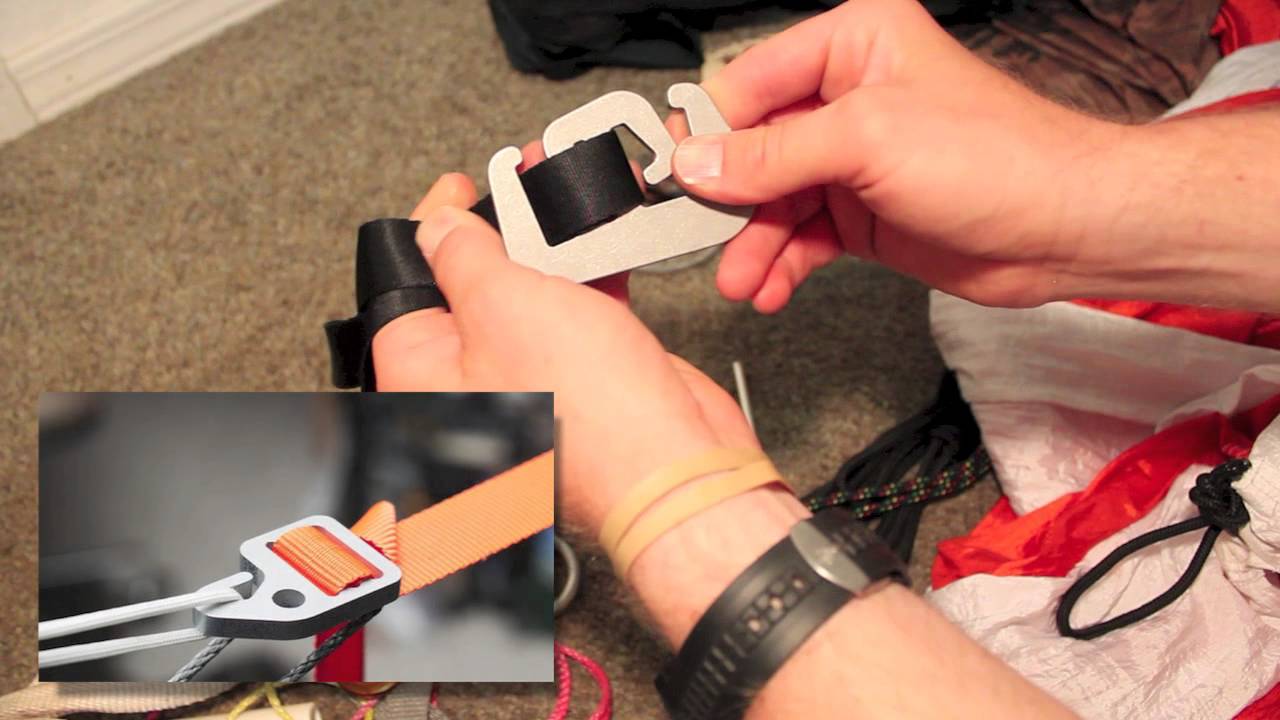The humble continuous loop. You’ve seen them—they’re nearly ubiquitious on hammocks these days, especially simple, gathered-end hammocks, but also all-in-one hammocks with integrated bug netting. Before you toss that small loop away, I want to describe and show some simple hammock suspension options that take advantage of this little workhorse.
Loop Tips (or “Why Use The Loop?”)
I’ve tested many hammocks, and the more I try, the more I’m finding the value in these short rope stubs. In fact, I would argue that these loops offer the greatest versatility for hammock suspension for both beginner and advanced users alike.
The rope loop first offers a basic necessity on Brazilian-style hammocks by gathering up the ends, creating the basic hammock pointed oval (marquise) shape we all know and love.
Tip 1: Avoid the drips
Probably my number one reason for using these loops is to create an attachment point as close to the hammock as possible. In this way, the attachment point is more likely to remain covered by the tarp in the rain, and the attachment can double as a water break or drip line, preventing water from running down the suspension line into the hammock.
Tip 2: The short hang
When circumstances bring you between trees that just barely clear your tarp, you may find your suspension is too long to be useful. In these cases, it’s nice to have a connection point close to your hammock to make hanging your hammock easier.
Tip 3: Quick connect
With the right connection options, such as a Whoopie Hook or Carabiner, a short loop makes quick work of setting up, just “clip” and go. Other hardware options are equally quick to adjust, such as descender rings, cinch buckles, or tri-glide-style devices.
Tip 4: Pimp my hammock
End loops provide maximum modularity options. Without making any changes to the hammock, you can slip on a new suspension option with ease. Quickly slip off a tri-glide in favor of descender rings or another option. Even without hardware, a continuous loop can be used with a few knot options, such as the Becket Hitch.
Tip 5: Sap sidestep
A nasty side-effect of hanging a hammock around trees is getting your suspension soaked in sap. With single-line suspension, such as straps that connect directly around the hammock and then wrap around a tree, you’re literally “stuck” with sap with no way to keep it away from the hammock. Using a short continuous loop on the hammock, you can easily disconnect a sappy strap and store it separately, if needed.
Tip 6: Under quilt clip
Having a short loop provides a handy clipping point for under quilts. Clip either around the loop or through it for a secure connection.
I prefer to clip my under quilt clip or hook through the loop for added security.Tip 7: Hang a pack
To keep my pack off the ground away from the bugs and yet still covered by my tarp, I often clip it to the end of my hammock. I simply insert the pack’s hang loop on the top and insert it through the short hammock loop and use a stick toggle to hold it in place (a mini carabiner also works).
Tip 8: Hammock ridge line
With a short loop on either side of the hammock, you have perfect connection points to add a structural or non-structural ridge line to the hammock. Using 1.75 mm dyneema, you can tie off a ridge line that helps the hammock maintain a consistent sag shape, but also provides a place to clip a gear pocket for storing small items like flash lights, cameras, and phones.
Loop Suspension Options
Toggles (e.g., the Marlinespike Hitch)
Carabiner (see also Dutch Biners)
Descender Rings
For this “wrapped descender ring” version, see my post on no-knots, lighter descender ring suspension.
Cinch Buckles
These “triangle” cinch buckles were assembled directly on to the continuous loop, but you can add them separately with a Lark’s Head knot, similar to the other examples shown here.Whoopie Hook
Elephant Trunk
Eureka! Chrysalis Suspension
Tri-Glide (see also Dutch Buckle)
Becket Hitch (see ABOK #1900, aka sheet bend)
The Becket hitch works great (maybe best) with a strap as the suspension line. You can use a modified double Becket Hitch with slippery line like Amsteel so it grips better instead of just slipping through. Note: DO NOT USE the Becket hitch with Amsteel/Dyneema on both the end loop and the suspension line. Dyneema is too slippery and will pull through. However, Dyneema with another rope, as in this photo, does work. Be sure to test for slippage prior to going into the field.Eye on Eye Sling toggle (see ABOK #1494)
Note: This eye on eye toggle also works best with two different types of rope, not Amsteel on Amsteel. However, you can use Amsteel on both the line and loop provided you tie it as illustrated above with the loop pushed through the suspension line, then the suspension line pushed up through the loop to accept the toggle. Stick toggles should be finger size and firm (some wood gets brittle or soft when wet).





























Leave a Reply